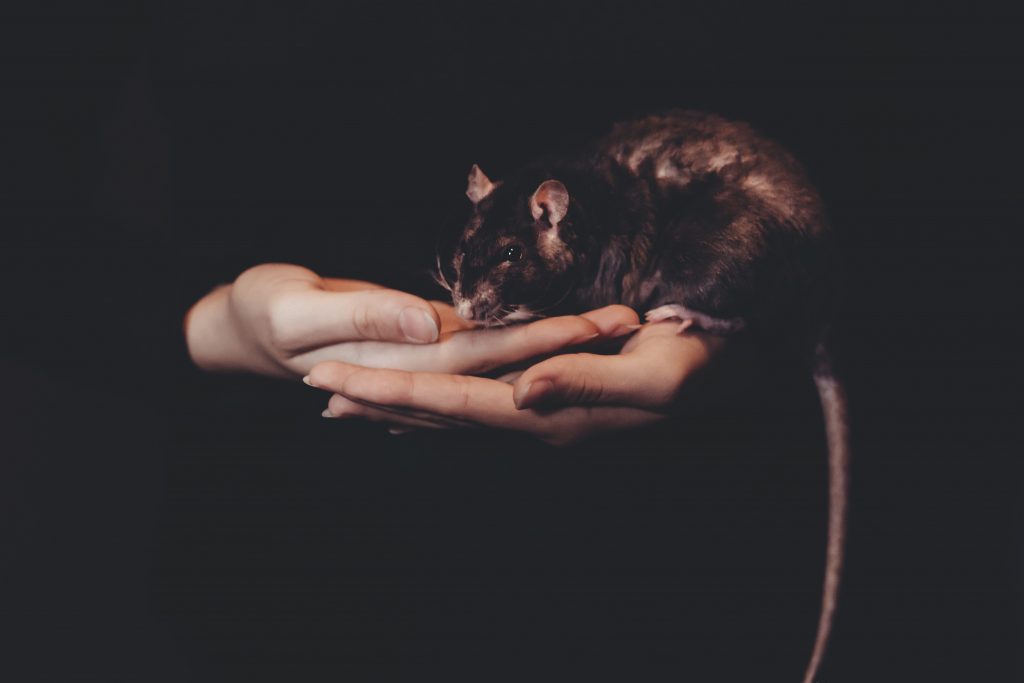
Some of you may be fortunate enough to be blissfully unaware of this natural – or potentially fabricated – phenomenon, but I’m here to enlighten you on the enthralling tale of the Rat King. Dating as far back as the 1500s and resurfacing in recent pop culture, rumors of this mysterious Franken-like creature bound together by nature – or perhaps human hands – have puzzled numerous audiences. Whether fact or fiction, it has certainly captured our attention with its gruesome appearance and chilling backstory.
A Rat King is a mess of entangled rats warped and knotted together, essentially creating one mega rat. Rat Kings are usually found with tails tied and tangled up, forming a rouet de rats or a “wheel of rats.” A large number of them happen to be found in the winter, suggesting this may occur as a result of a group of rats tying their tails together in an attempt to huddle for warmth and then becoming matted or frozen together. There have also been reports of potential sap, blood or feces adhering the rats to one another, creating the super rat. Many others believe this spectacle is born out of human intervention or cult activity. Whichever the case, this conspiracy has a lot of history.
According to a scientific study conducted in Estonia, there have been at least 58 reliable Rat King sightings recorded over the past five centuries. In 1973 biologist Maarten ‘t Hart tracked down nearly all of them. The first of these being in 1576 when Johannes Sambucus – a Hungarian historian – released the fourth edition of his Emblemata. This 16th century picture book contained a description of seven rats with knotted tails discovered by servants in Antwerp, Belgium. From that point on the story grew and evolved with more instances of the Rat King arising, particularly in Germany.
A popular mythology spread around Germany told of a rat leader demanding to be sat atop a throne of lower peasant rats. Naturalish, a popular podcast that deep dives into conspiracies like this.
“A rat king is a tangled, mangled nest of lesser rodents becoming a living dominion of nastiness, representing the twisted and evil nature of the one king sitting high atop his suffering legacy,” said Alex Duckles, host of Naturalish. “The story initially spread across Europe in the late 1500’s during an era of reformation in Germany after the rise of Lutheranism and a Peasants’ Rebellion in 1524.”
Lower class Europeans fed up with the ruling few took to the idea of the Rat King, as it resonated with their views on the exploitation of the common people. This is reasonable for a popular story, but it doesn’t explain the repeated findings of real – and occasionally live – Rat Kings throughout history.
You can find these monstrosities in several museums around the globe. One housed in the Otago Museum in Dunedin, New Zealand is said to have been beaten to death after falling from the rafters of a shipping office. It sits in a vat of preservatives with its twisted tails suspended for all to see. The Guinness World Record of the largest ever recorded Rat King is available in Altenburg, Germany. The whopping heap of 32 total individual rats was found in 1828 in a miller’s chimney in Buchheim, Germany. There are many other Rat Kings that have been lost in time, from museum fires to burglaries.
The most burning question is whether these Rat Kings are truly forming naturally or just born out of some twisted joke. This is honestly inconclusive. There have been several lab attempts to create a fully formed Rat King from start to finish, but none have been successful. Thus it is impossible to definitively say this morbid miracle could occur naturally. The conditions that are thought to form the Rat King are tricky to replicate, and Rat Kings are rarely found alive. Recently a video did circulate of a bundle of live squirrels bound together by their tails eerily similar to the Rat King, but there was no evidence that this occurrence wasn’t set up before clicking record. So if they are man-made, why?
One argument has to do with the potential monetary value of such an extreme oddity. During the Middle Ages it was popular for some merchants to glue bat wings onto lizards and pass them off as dragons. Others sewed the tops of monkeys onto the tails of fish and called them “Feejee Mermaids.” The Rat King could potentially be a mythical invention like these, made to entice gullible customers. Some also believe the Rat King is a cult symbol, created to give threat or warning, as rats have never been a particularly favorable animal, and a mangled swarm of them screams imminent danger. However, there have been no solid reports of anyone being caught winding rat tails together, so like most of the Rat King conspiracy, it’s a mystery.
One thing is for certain, while there may never be an answer to the Rat King myth, it will continue to thrive in a society obsessed with the paranormal and supernatural, forever haunting the nightmares of the unlucky souls who happen upon its gruesome images. Long live the Rat King.
